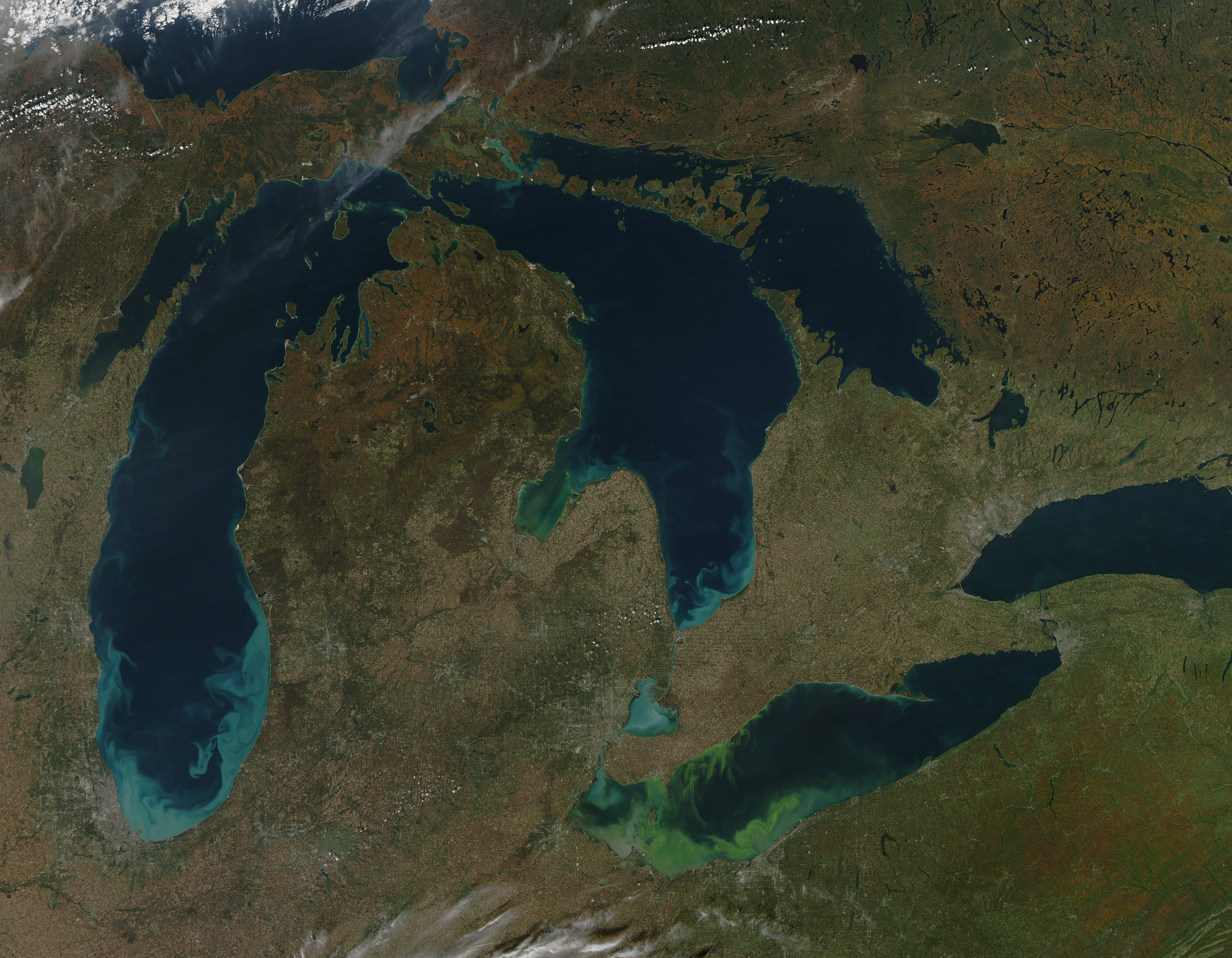The green scum shown in this image is the worst algae bloom Lake Erie has experienced in decades. Such blooms were common in the lake’s shallow western basin in the 1950s and 60s. Phosphorus from farms, sewage, and industry fertilized the waters so that huge algae blooms developed year after year. The blooms subsided a bit starting in the 1970s, when regulations and improvements in agriculture and sewage treatment limited the amount of phosphorus that reached the lake. But in 2011, a giant bloom spread across the western basin once again. Landsat image created for NASA’s Earth Observatory by Jesse Allen and Robert Simmon, using data provided courtesy of the United States Geological Survey
